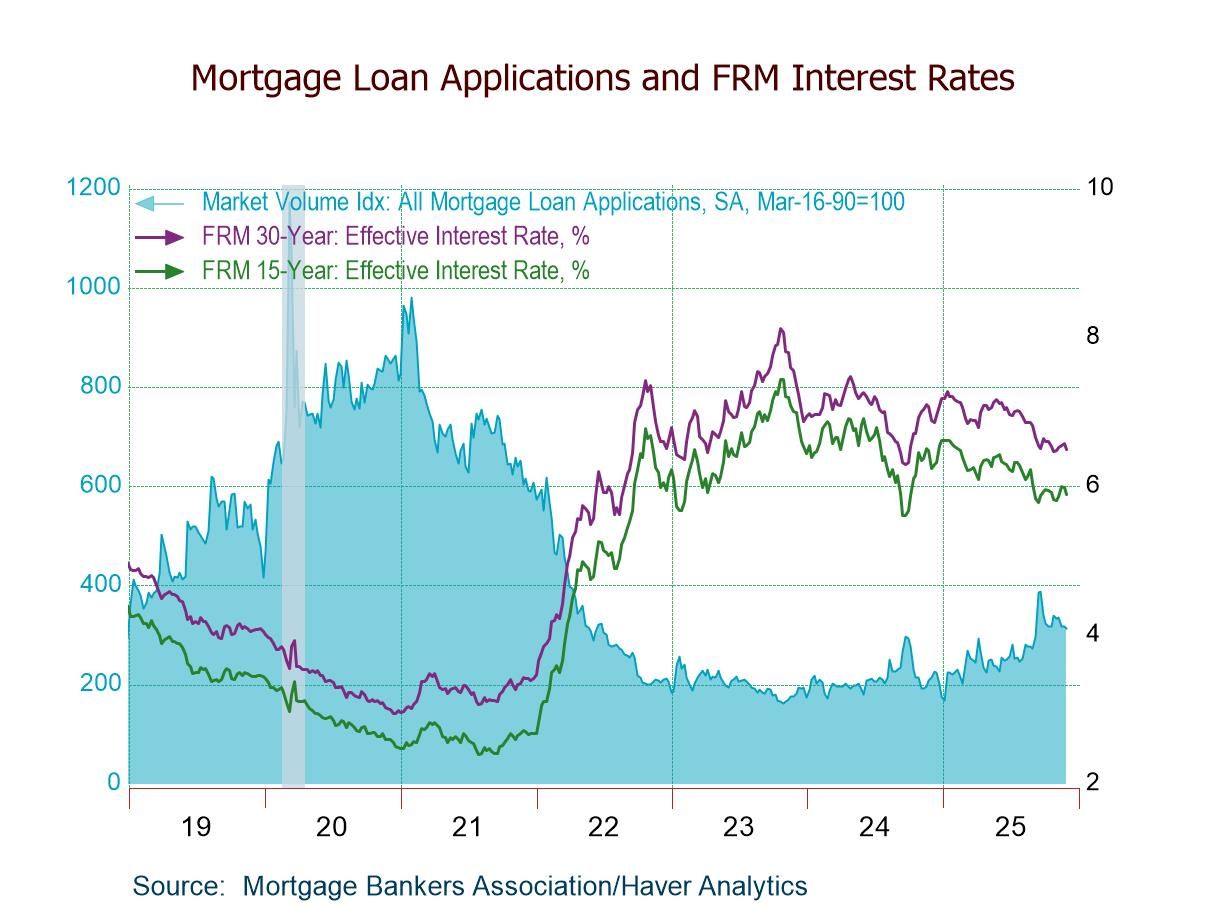 Global| Aug 11 2011
Global| Aug 11 2011Japan Machinery Orders Expand
Summary
Japan’s total machinery orders rose by 5.6% in June after falling by 2.3% in May. Orders are up at a 28% rate over three months for the period following the onset of tis natural disasters. Orders are also up by 10.9% Yr/Yr. Core [...]
 Japan’s total machinery orders rose by 5.6% in June after falling by 2.3% in May. Orders are up at a 28% rate
over three months for the period following the onset of tis natural disasters. Orders are also up by 10.9% Yr/Yr.
Japan’s total machinery orders rose by 5.6% in June after falling by 2.3% in May. Orders are up at a 28% rate
over three months for the period following the onset of tis natural disasters. Orders are also up by 10.9% Yr/Yr.
Core orders which exclude big ticket projects are up by 7.7% in June and 3% in May They are rising at a 32% annual rate over three months and are up by 17.7% Yr/Yr.
The slump in the global economy can be seen in the foreign order/domestic order split. Japan’s domestic orders are surging at a 159% annual rate over three months and are up by 22% over 12-months.
Foreign demand is off as orders have dropped by 5.9% in June alone after plunging by 6.6% in May. Over three-months foreign orders are dropping at a 35% annual rate. Foreign orders are off by 3.1% over 12 months.
Japan is not getting any help in its rebuilding efforts from foreign orders. On the face of it, that does not seem to be a problem since domestic orders are so strong. But the domestic rebuilding is focused on construction efforts. Japan could use more support from a more robust foreign sector that would provide better order diversity. Japan traditionally does depend a lot on its ability to export.
The rest of the world will not benefit too much from Japan’s rebuilding since it is literally that and it will be done locally. There will be raw martial shipments like lumber and the like, but most of the heavy lifting will be done at home.
Japan’s orders are an example of how the shift in global demand is already creating a negative impulse. Japan is seeing a drop in foreign orders, the US is seeing export weakness. It looks as though the negative shock is reverberating around the global economy and that means it will reinforce itself. This is disturbing not just for Japan but for prospects for overall world growth.
| Japan Machinery Orders | |||||||
|---|---|---|---|---|---|---|---|
| M/M % | SAAR % | ||||||
| SA | Jun-11 | May-11 | Apr-11 | 3Mo | 6Mo | 12Mo | 12Mo |
| Total | 5.6% | -2.3% | 3.1% | 28.1% | 8.2% | 10.9% | 30.2% |
| Core Orders* | 7.7% | 3.0% | -3.3% | 32.5% | 31.4% | 17.7% | 3.6% |
| Total Orders | |||||||
| Foreign Demand | -5.9% | -6.6% | -2.1% | -45.1% | -12.4% | -3.1% | 76.2% |
| Domestic demand | 21.0% | 2.2% | 2.6% | 159.2% | 7.9% | 22.5% | 7.0% |
| * Excl ships and electric power | |||||||
Robert Brusca
AuthorMore in Author Profile »Robert A. Brusca is Chief Economist of Fact and Opinion Economics, a consulting firm he founded in Manhattan. He has been an economist on Wall Street for over 25 years. He has visited central banking and large institutional clients in over 30 countries in his career as an economist. Mr. Brusca was a Divisional Research Chief at the Federal Reserve Bank of NY (Chief of the International Financial markets Division), a Fed Watcher at Irving Trust and Chief Economist at Nikko Securities International. He is widely quoted and appears in various media. Mr. Brusca holds an MA and Ph.D. in economics from Michigan State University and a BA in Economics from the University of Michigan. His research pursues his strong interests in non aligned policy economics as well as international economics. FAO Economics’ research targets investors to assist them in making better investment decisions in stocks, bonds and in a variety of international assets. The company does not manage money and has no conflicts in giving economic advice.






